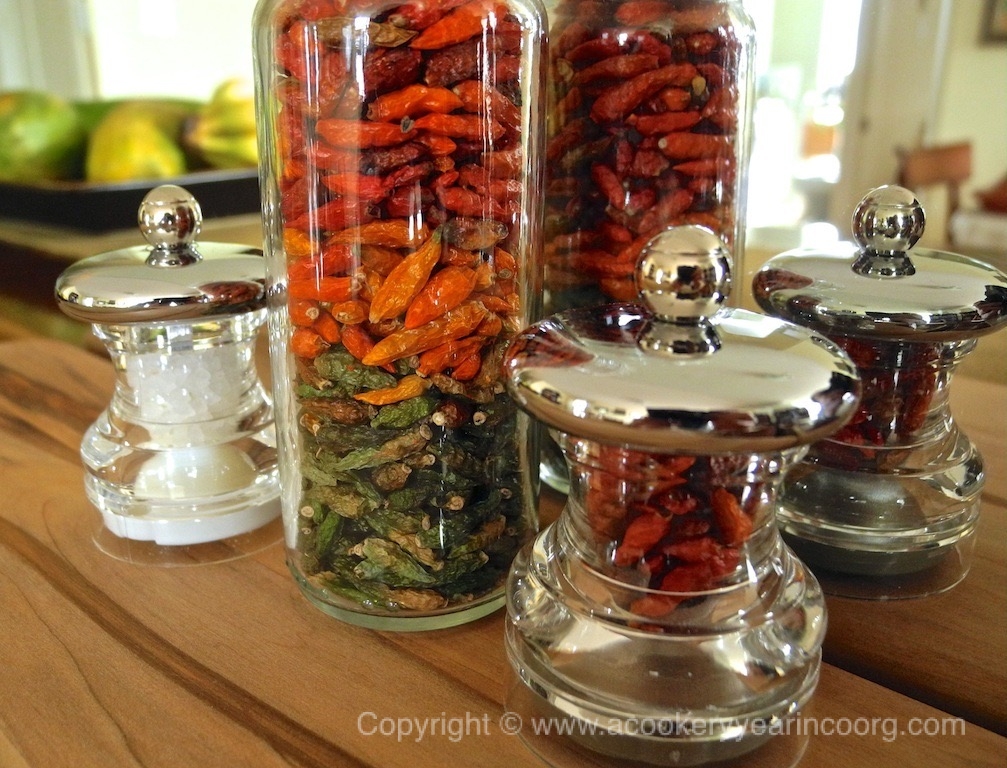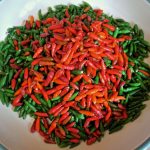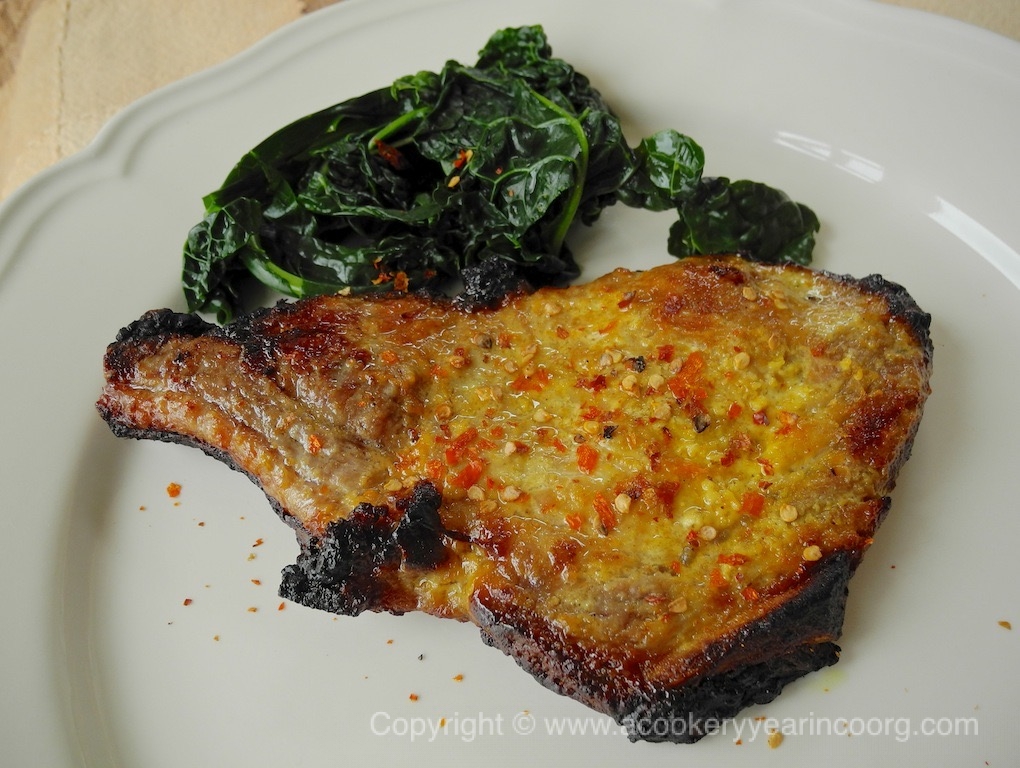Spring cleaning my kitchen stores, and the evidence lies before me – I am besotted with chillis. Aleppo, Byadgi, Cayenne, Dundicut, Kashmiri, Naga, Turkish, Hungarian, Spanish, they come tumbling out. And I haven’t even got to the Mexican ones yet!
Each variety has a distinct place in the cuisine of distant and not so distant lands. Of all the foods that travelled from the New World in the Columbian Exchange, there can be little doubt that chillis dramatically changed the way we eat. Today, it’s hard to imagine a time without the rich spectrum of chilli cultivars that have worked their way into virtually every culinary nook and corner of the world.
With that world of chillis at my tingling fingertips, there’s one variety that holds a special place in my heart, and that’s the little Kanthari, a cultivar of Capsicum frutescens that’s commonly grown in Kerala and Coorg. In the Kodava language, it’s known as parangi malu*.
There are always little shrubs to be found growing in the kitchen garden, or wild in the countryside, springing up from seeds deposited by a satisfied bird. It’s also one of the small, pungent varieties referred to as “birds eye” because of their shape, but I like to think it’s a reference to how much the birds seem to like them. And birds really love those chillis – if you want any, you”ll have to fight for them!
While chilli aficionados tend to rate the kanthari more for its heat than any complexity of flavour, it does bring a distinct quality to foods prepared using it, particularly when they’re used fresh. In Coorg, a hot favourite, quite literally, is barbecued pork, roasted with perhaps just a little salt and turmeric, then dressed with crushed parangi malu and a squeeze of lime. The mere mention of this is enough to get those taste buds tingling!
To my mind, the sharp, searing heat of parangi malu has a clarifying, brightening effect on food very similar to that of citrus, and the two together combine to make flavours positively shine.
Picked when fully grown, but green, there are subtle differences in flavour to the ripened, red pods. If you have some fresh parangi malu handy, that’s wonderful. But the dried versions aren’t half bad! Keep a small supply of sun dried parangi malu to use as flavour boosters in any number of ways.
Soaking the chillis in lime or lemon juice for 10 – 15 minutes helps bring out the flavour and mellow the heat somewhat. Grind together with rock salt and grated coconut, and you have a version of the addictive Sri Lankan kocchi sambol to complement your meals. I keep some dried chillis in a spice mill, ready to be sprinkled over anything that needs pepping up.
Try it on that fried egg in lieu of pepper 🙂
Here’s a simple recipe for pork chops that I think will have your heart and mouth singing the praises of parangi malu.
Grilled pork chops with parangi malu
- 4 pork chops
- 4 – 5 cloves garlic
- 1 tbsp ground fresh ginger
- 7 – 8 dried parangi malu**
- 1/4 tsp turmeric
- 2 tbsp cooking oil
- 1/2 tsp salt, or to taste
- 1/4 cup seville orange juice and 2 tbsp palm jaggery
or - 2 tbsp marmalade and 2 tbsp lemon juice
Rub the pork chops with turmeric and salt.
Blend the remaining ingredients together to a smooth paste and marinate the pork chops for at least two hours. (Less if they’re thinner cuts).
Remove from the marinade and grill or pan fry on high heat until cooked through.
Sprinkle with crushed parangi malu and get ready for a treat!
*As mentioned in previous posts on pineapple, jackfruit and pepper, the “parangi” prefix refers to the foreign, namely European origin attributed to the fruit.
**Thai birds eye chillis may be substituted, but you may want to reduce the quantity.





